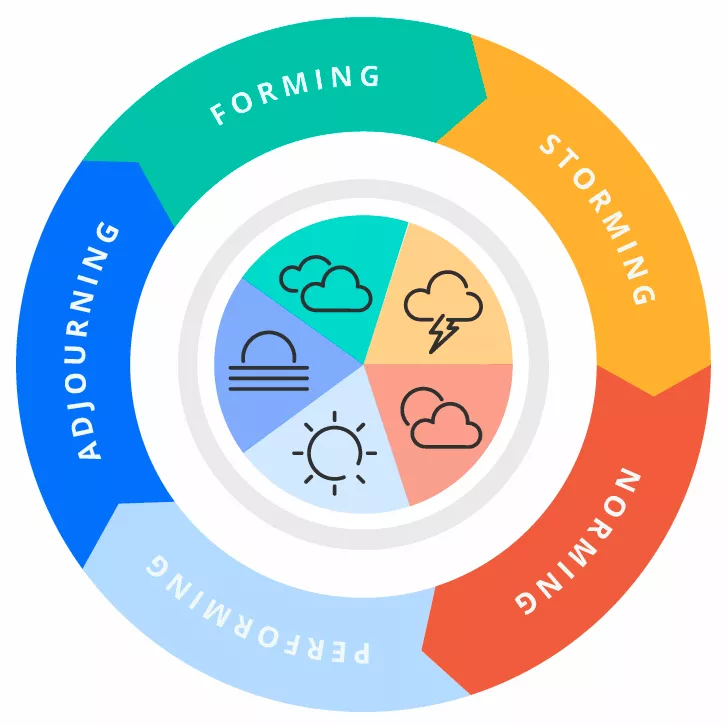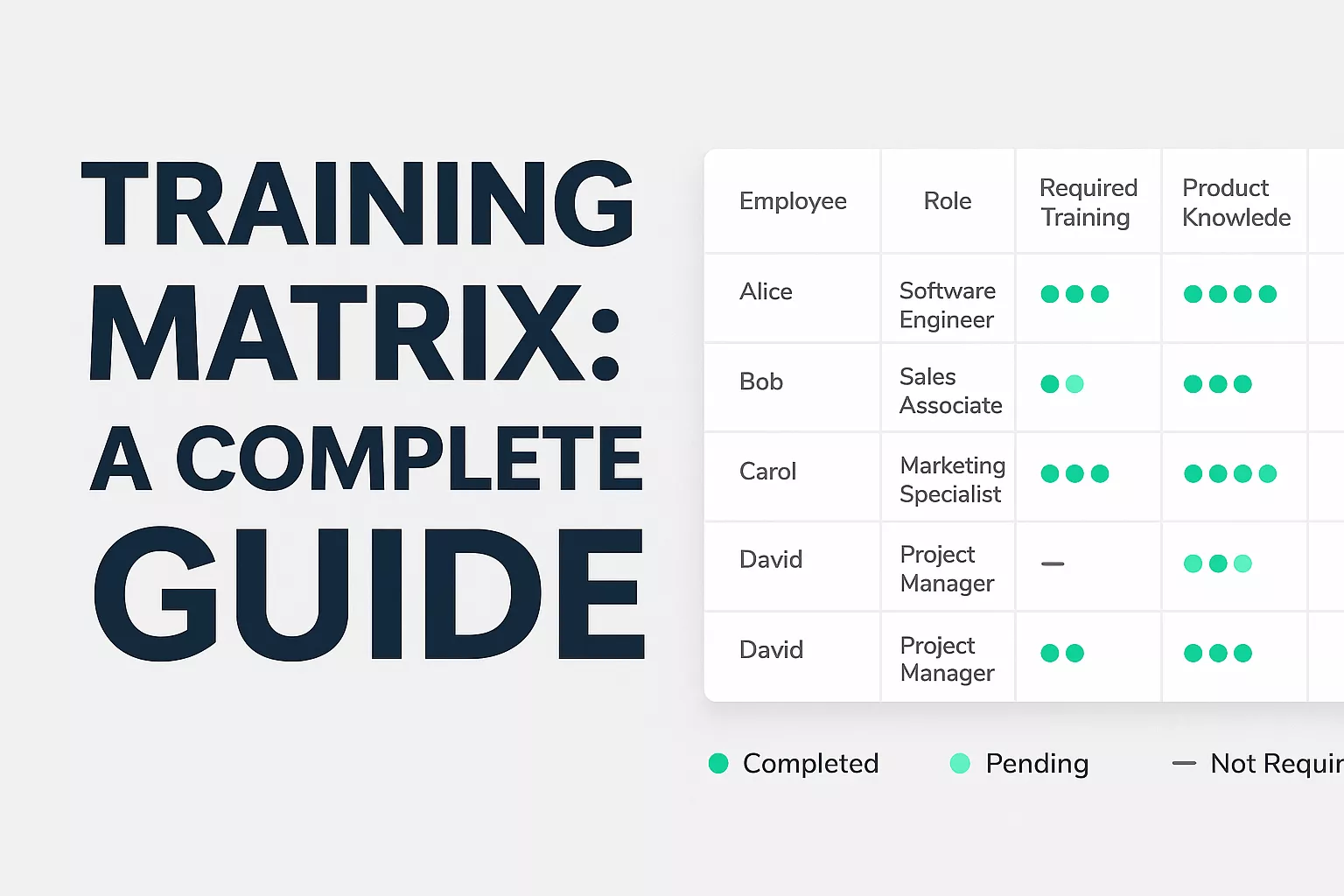by Venchito Tampon | Last Updated on April 28, 2025
Team training is a structured learning approach that aims to improve team performance and collaboration within an organization. It helps enhance communication, trust, and coordination among team participants, leading to higher productivity and better outcomes.
Contents
ToggleDifferences Between Team Training and Team Building
In the local learning and development scene in the Philippines, team training is often intertwined with team building, as both require team participation.
The primary focus of team training is to enhance the specific skills and competencies of team members, particularly team leaders (managers, supervisors, directors, etc.), so that they can perform their jobs effectively in handling their teams, addressing conflicts and issues, and assessing team dynamics day to day.
Conversely, team building helps to strengthen relationships, trust, and collaboration among team members using various activities and methodologies.
Team training enhances competencies, while the latter promotes healthy relationships.
Another way to look at the differences between team training and team building is the content and methodology.
Team training content is usually specific to the job or industry, including technical skills, soft skills, or process improvements, but it is more often contextualized in team settings. It is often structured with a clear outline, objectives, and assessments similar to corporate training programs.
Conversely, team-building activities are less structured, sometimes informal, and experiential in nature. They focus on interpersonal dynamics and are often interactive and fun, designed to engage participants in a way that fosters collaboration.
Why Team Training is Important For Team Dynamics?
Teams face different challenges, whether they’re newly built or flexible enough to exchange members with other teams. The truth is that, more often than not, our fast-pacing environment and technology could affect every team’s dynamics.
As such, team training is needed to enhance communication and collaboration. It helps address any issues and conflicts within the team, which is essential for the culture building process.
Team training also develops team cohesion and trust. Given that trust is the glue that binds team members, understanding what makes a high-performing, high-relationships core team can foster a more supportive work environment.
Another upside of team training is that it boosts productivity and efficiency. It aids in equipping team members with the right skills to work more effectively together (not just produce individual output). As team members learn team dynamics and the right delegation and management, they’ll also reduce redundancy and enhance workflow.
Types of Team Training
Different types of team training exist, such as in-house learning and development, or a corporate trainer can help the company or client grow their people. Let me give you the most-applied types of training:
Skill-Based Training
This type of team training focuses on enhancing specific skills necessary for every team member to perform their roles effectively. For instance, technical skills training that help employees master the use of new tools and technological platforms, while leadership could be leadership training to help them prepare team members for management roles.
Soft Skills Training
Soft skills, such as personality development, communication, problem-solving, and presentation skills, are essential for effective teamwork. These soft skills training programs help team members enhance their skills and master specific competencies, leading to better collaboration and conflict resolution.
Cross-Training
Cross-training involves teaching team members to be flexible and adaptive to the ever-changing internal changes of the organization, as it typically happens for companies with multiple projects and juggling client management. Everyone must know how to perform their roles effectively from one team to the next. This doesn’t just help them be more flexible as individuals but helps team members understand each other’s responsibilities – creating a more cohesive team.
Team-Alignment Exercises
Team alignment exercises are designed to strengthen relationships and align everyone to the team’s or the entire organization’s vision, mission, and goals. These exercises range from simple icebreakers to more complex mental or physical challenges requiring teamwork and collaboration.
The 5 Dynamics of Team Development
The five dynamics of team development were pioneered by a renowned psychologist, Bruce Tuckman, in 1965. Tuckman’s model includes Forming, Storming, Norming, Performing, and Adjourning. It is a comprehensive framework to help trainers and learning and development practitioners understand the dynamics of team development.
Each stage represents a different level of team maturity, collaboration, and productivity.
Forming
The forming stage is the initial phase of team development, where members come together and get acquainted. During this stage, individuals are more often than not cautious as they’re still trying to build harmony with others, trying to understand their roles and their team’s objectives and goals, and assessing themselves and how they can fit into the group.
At this stage, you’ll notice a high degree of uncertainty, and team members may look to the leader for guidance and direction. The challenge is building trust and clarifying roles and expectations.
Storming
The storming stage is often the most challenging phase, as this is where conflict and power struggles occur. As team members become more comfortable working with each other, differences in opinions, working styles, beliefs, attitudes, and personalities may lead to tension and disagreements.
This stage is critical for growth, as managers and supervisors must develop early leadership skills to address certain issues and develop ways of working together.
The top challenge during this stage is managing conflicts and finding common ground among individuals. The leader must then know how to facilitate open communication, resolve conflicts, and guide the team towards better collaboration.
Norming
In the norming stage, the team begins to resolve its conflicts and gains a sense of cohesion. Roles and responsibilities become clearer, and team members start to work more collaboratively. The team establishes norms and processes that can help it function more effectively. Here, you’ll see a growing sense of camaraderie and trust.
One challenge at this stage is maintaining momentum built from solid progress in results and achievements and reinforcing positive behaviors so that they encourage continued collaboration and ensure the team stays focused on its goals and objectives.
Performing
As the name suggests, the performing stage represents the peak of team development, where the team operates at high efficiency and effectiveness. Team members are confident in their roles and work together seamlessly to achieve their goals.
Communication is open, and the team can handle challenges and make decisions autonomously. This stage is mostly marked by high productivity, innovation, and satisfaction.
The challenge here is sustaining performance, continuous improvement, and adapting to new challenges. You don’t want your team to stay stagnant; instead, it should remain flexible and adaptive to the ever-changing needs of your organization and customers.
The leaders must empower the team to take ownership of their work, create a succession plan for emerging leaders, provide support as needed, and focus on the company’s strategic goals.
Adjourning
The adjourning stage, also known as the “mourning” stage is when the team has completed all its objectives and the project or task ends. The adjourning stage typically happens to the team in many companies with multiple projects.
At this stage, team members may feel a sense of accomplishment while feeling sad or uncertain about which team they’ll join next. This stage is an opportunity for reflection and celebration of the team’s achievements.
The top challenges here are managing emotions and ensuring a smooth transition. Leaders should know how to facilitate reflection and debriefing so they can continuously support their team members as they transition to new roles or projects.
The five dynamics of team development are valuable for anyone trying to understand how their teams can evolve from mediocre to high-performing ones. Understanding these stages can allow teams to navigate conflicts, strengthen relationships, and ultimately achieve their team goals.
Implementing an Effective Team Training Program
Every in-house L&D practitioner or corporate trainer must take a structured approach to implementing an effective team training program. Let me share with you how we structure our team training programs as a corporate training provider.
Needs Assessment
The first step in implementing a team training program is to assess the team’s specific needs. We call this training needs analysis. This involves identifying areas where the team (and its leaders) must improve or develop skills.
A practical training needs assessment can help customize the team training program to address the issues observed and uncovered during the analysis phase.
Set Clear Goals
Once the training needs assessment is complete, it’s essential to set clear, measurable goals for the training. Practical goal setting using tools like SMARTER goals can help align with the organization’s overall objectives and provide a clear direction for the training.
Choose Appropriate Training Methods
Many training methodologies include lectures, interactive discussions, workshops, role-plays, online courses (self-paced learning courses), and hands-on activities based on the team training program outline.
The key to implementing the correct methodology is to match it to the current learning styles and needs.
Measure Training Effectiveness
Ultimately, you want to see if your team training program has a real impact on your audience. You can use the Kirkpatrick Evaluation Model framework to measure and evaluate the effectiveness of the team training programs. It includes four levels:
- Level 1: Reaction—This is where you can measure whether the learners have found the training relevant to their role, engaging, and useful using feedback forms and template surveys after the training program.
- Level 2: Learning—Measure whether or not the learner has acquired the knowledge, skills, attitude, confidence, and commitment that the training program is focused on.
- Level 3: Behavior – measure behavioral changes after learning and see if the learners have applied them in their daily work.
- Level 4: Results – measure whether or not the target objectives have been achieved due to the training program.
Team Training Resources
If you’re interested in exploring team training, several resources are available. For books, you can purchase “The Five Dysfunctions of a Team” by Patrick Lencioni and “Team of Teams” by General Stanley McChrystal.
Invest in Team Training and Development
It is not enough to just have stock knowledge after reading this guide; invest in team training for your employees. Contact one of our teams to set up a training needs analysis session so we can start developing team training programs for your organization.
The Author
Venchito Tampon
Venchito Tampon is a Filipino motivational speaker, Business Consultant, Founder and Lead Corporate Trainer of Rainmakers Training Consultancy. He trained and spoken in over 250+ conventions, seminars, and workshops across the Philippines and internationally including Singapore, Slovakia, and Australia. He has worked with top corporations including SM Hypermarket, Shell, and National Bookstore.
He also founded SharpRocket, a digital marketing company, Blend N Sips, eCommerce for coffee supplies, and Hills & Valleys Cafe, a local cafe with available franchising.
He is a certified member of The Philippine Society for Talent Development (PSTD), the premier organization for Talent Development practitioners in the country.
An active Go Negosyo Mentor (of Mentor Me program) and a business strategist and consultant.
You may also like
Training Matrix: A Complete Guide
Training mix is a structured framework that helps HR and Learning and…
Learning and Development Plan: A Complete Guide
Learning and Development Plan (L&D plan) is a structured flow and framework…





